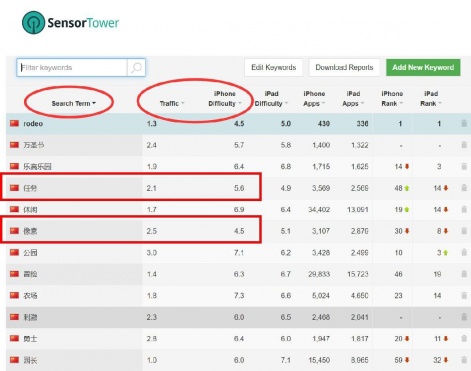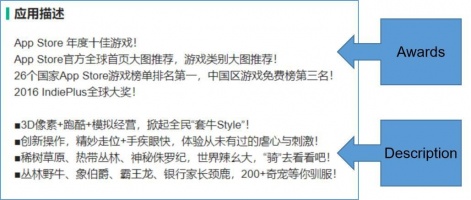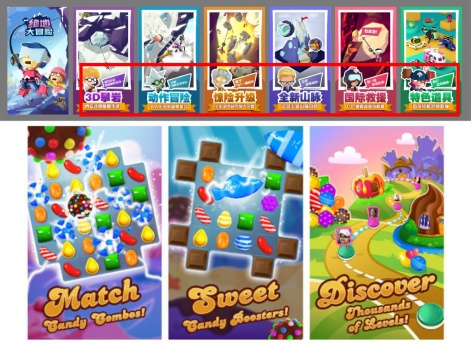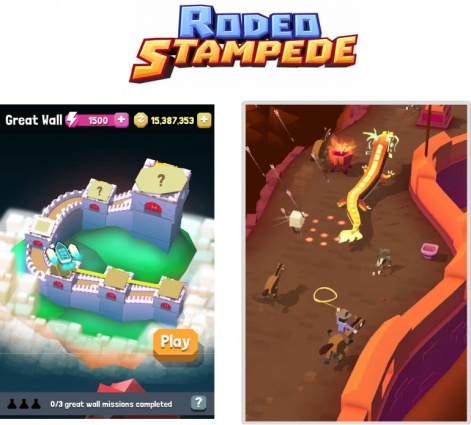App Store Optimization is a key factor in the success of any mobile game—and every developer knows it.
You’ve got to know how to position your app in stores, which images to showcase, and which keywords are most important to use in your game description.
But what happens when these elements have to be combined and adapted for an entirely new and unfamiliar market?
The ultimate goal of App Store Optimization—or ASO—is to drive downloads from the app stores where your title is listed.
In this article, we will explore the various techniques and extra touches Yodo1 applies when presenting our partner games in China’s many app stores. Basically, we’re going to give you a sneak peak at the localization practices we use to make titles come out on top in the world’s biggest mobile gaming market.
Keep in mind that you’ll have to let go of many preconceptions in order to localize to an audience that is vastly different from other parts of the world. This will entail precise selection of every word, picture, and appeal.
Copywriting
This covers all the words used to define your game, including its name, your studio name, subtitles, keywords, descriptions, and updates.
Naming: For the Chinese market, we suggest keeping the name of your game under 5 Chinese characters, as it is easier to pronounce and remember. We also strongly advise against word-for-word translations from English. Instead, the name must be optimized to highlight core gameplay and, if possible, include its more attractive features.
Of course, we know how personal choosing a name is: it can’t just be a matter of selecting the most search-optimized combination of words or characters. It has to be you.
That’s why, at Yodo1, we work with you personally to provide three optimized alternatives from which to choose—ensuring a quality name that will resonate with you and your audience.
To give a simple example: if you have a racing game like Asphalt, the character for car (车) must feature in the title. But let’s say that in your racing game players will compete in jungles, savannahs, and deserts: you’d want to include a word like wild (狂野) to reflect the nature of your tracks.

You’ve also got to pay attention to the heat rate, or how hot a keyword is. As with general SEO, you’ll want to know how often a word is searched and what difficulty, or level of competition, is attached to it.

Keywords & Descriptions: When it comes to the descriptions of your game and its updates on Google Play, you have to research and incorporate keywords that are well-matched to the characteristics of your game. Whereas, for Apple’s App Store, keywords are directly inserted in the dedicated section.
For Chinese Android stores, instead, keywords are not as important as the way the message itself is written. Compared to audiences in other parts of the world, Chinese players don’t want to read long, descriptive texts about the game: they’d rather see gameplay and features covered in a comprehensive bullet-point list.
Lastly, don’t forget to highlight awards received and the number of players reached, as all these
elements will add trust and value perception to your game.
Chinese Version:

English Version:

Graphics
Fortunately, in the realm of graphics, many rules apply equally to western and eastern audiences. This includes:
● Five or six screenshots featuring your brand image;
● Defining your unique selling points and producing images accordingly;
● Displaying characters, equipment, and game demos, giving a representation of levels.
However, in China your screenshots should be simple and brightly colored—even for games with a dark theme—and feature easy-to-understand subtitles.

Chinese audiences also greatly appreciate customized text boxes in each screenshot, with an appealing design and cute features—something fairly uncommon in the western world.
As an example, have a look at how we optimized a game we manage called Hang Line (top) compared to a non-Chinese counterpart (bottom).

By customizing the text in our Hang Line screenshots, we were able to drive an 18% increase in downloads.
Localized Content
If you already have localized content in your game, you should present it in your screenshots. This can include characters that appear to have the same ethnicity of your target gamer—with appropriate skin tones, facial features, and wardrobe—or animal representations that would appeal to your audience, such as Chinese dragons, pandas, or the iconic guardian lion statue.
If included, levels containing landmark attractions such as the Great Wall or Forbidden City should also be highlighted in your images.

Our team’s global expertise has accumulated over years of experience with games such as Rodeo Stampede, Crossy Roads, and, in China, Transformers: Earth Wars. Contact us at info@yodo1.com to learn how to better market, manage, and monetize your game.
About Yodo1
Yodo1 is a game platform company that helps developers better market, manage, and monetize their games. Our AI-powered tools and global expertise in areas such as mobile ads, community management, and digital IP licensing enable partners to increase playtime, revenue, and retention. Our vision is to open the world of gaming success to anyone with the talent to develop. To learn more, visit www.yodo1.com and follow us on our social media.

















